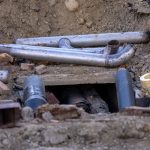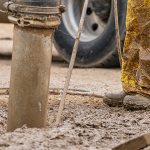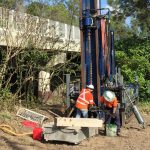Subsurface Utility Engineering (SUE): Reducing Risk and Improving Projects
Construction and infrastructure projects across Australia face numerous challenges, from managing budgets and timelines to ensuring safety and minimising disruptions. One significant risk often lies beneath the surface: existing underground utilities. Damaging these utilities can lead to costly delays, project rework, environmental damage, and even serious injuries. Subsurface Utility Engineering (SUE) is a crucial practice used to mitigate these risks. This article provides a comprehensive overview of SUE, explaining its importance, the process involved, key benefits, and how it contributes to improved project outcomes in Australia.
What is Subsurface Utility Engineering?
Subsurface utility engineering is a branch of engineering that focuses on identifying, locating, and characterising existing underground utilities. Unlike traditional record-based utility information, which can be inaccurate or incomplete, SUE employs various investigative techniques to provide a reliable representation of the subsurface environment. This detailed information is crucial for planning, designing, and constructing infrastructure projects safely and efficiently, and SUE is becoming increasingly important as urban areas become more densely populated and infrastructure projects become more complex.
The Subsurface Utility Engineering Process
The subsurface utility engineering process typically involves four Quality Levels (QLs), each providing progressively more detailed information:
- Quality Level D (QL-D): This is the most basic level, relying solely on existing utility records, such as plans and maps. While useful for initial planning, QL-D information is often incomplete or inaccurate. This means that while it is a starting point for subsurface utility engineering, it is not reliable for construction purposes.
- Quality Level C (QL-C): This level includes surveying visible surface utility features like manholes, valve boxes, and fire hydrants, and comparing these observations with available records. QL-C provides a more accurate representation than QL-D but still relies on existing documentation. Subsurface utility engineering experts use this level to verify the accuracy of existing records.
- Quality Level B (QL-B): This level uses geophysical methods, such as ground-penetrating radar (GPR) and electromagnetic location, to designate the approximate horizontal position of underground utilities. QL-B provides a significant improvement in accuracy compared to QL-C and is essential for avoiding utility conflicts during design. This is a core part of subsurface utility engineering.
- Quality Level A (QL-A): This is the highest level of accuracy, involving precise horizontal and vertical location of utilities through non-destructive excavation techniques, such as vacuum excavation or potholing. QL-A provides the most reliable information and is crucial for critical areas where precise utility location is essential. Subsurface utility engineering specialists highly recommend this level for complex projects.
The Benefits of Subsurface Utility Engineering
Implementing SUE offers several significant benefits for infrastructure projects:
- Reduced Risk of Utility Strikes: By accurately locating and mapping underground utilities, SUE significantly reduces the risk of accidental damage during excavation. This prevents costly repairs, project delays, and potential injuries. This is a core benefit of SUE.
- Cost Savings: Avoiding utility strikes translates directly into cost savings by preventing project rework, emergency repairs, and potential legal liabilities. Proactive SUE can save projects significant amounts of money.
- Improved Project Scheduling: Accurate utility information allows for better planning and scheduling of construction activities, minimising delays and optimising project timelines. SUE allows for more accurate scheduling.
- Enhanced Safety: Reducing the risk of utility strikes creates a safer working environment for construction personnel and the public. SUE prioritises safety.
- Better Design and Planning: SUE data provides valuable information for design engineers, allowing them to avoid utility conflicts and design more efficient and cost-effective solutions. SUE data is essential for design.
- Minimised Disruption to the Public: By preventing utility damage, SUE helps minimise disruptions to essential services, such as water, gas, and electricity, for the surrounding community. Subsurface utility engineering helps minimise disruptions.
Subsurface Utility Engineering in Australia
In Australia, the increasing complexity of infrastructure projects and the density of underground utilities make SUE an essential practice. State and territory governments are increasingly recognising the importance of SUE and are incorporating it into project guidelines and regulations. For example, many road authorities require SUE investigations before major roadworks commence.
The Australian Standard AS 5488 Classification of Subsurface Utility Information provides guidance on the classification and quality levels of subsurface utility information, promoting consistency and best practice across the industry. This standard is important for SUE practices.
How Subsurface Utility Engineering Mitigates Risks
Subsurface utility engineering directly mitigates risks associated with underground utilities by:
- Providing Accurate Data: SUE replaces reliance on potentially inaccurate or outdated records with reliable, field-verified information.
- Early Identification of Conflicts: By identifying potential utility conflicts early in the design phase, SUE allows for design modifications to avoid these conflicts.
- Reducing the Likelihood of Delays and Cost Overruns: By preventing utility strikes and subsequent repairs, SUE helps keep projects on schedule and within budget.
- Improving Safety on Site: SUE protects workers and the public by reducing the risk of accidents associated with utility damage.
In Conclusion
Subsurface utility engineering is a vital practice for mitigating risks and improving outcomes for infrastructure projects in Australia. By providing accurate and reliable information about underground utilities, SUE helps prevent costly delays, enhances safety, and improves project efficiency. As Australia’s infrastructure continues to develop, the importance of SUE will continue to grow, and investing in SUE is an investment in project success, safety, and the minimisation of disruption to the community. By adopting best practices in SUE, planners and builders can ensure the efficient and safe delivery of their infrastructure projects.
Contact Aussie Hydro-Vac Services
Facing utility location challenges? Aussie Hydro-Vac Services specialises in subsurface utility engineering (SUE) and non-destructive digging. Protect your project, budget, and workers. Contact us today on +61 7 3287 7818 or via our website for expert utility locating and hydro excavation solutions across Queensland and Northern New South Wales.
Related Posts

PUP Underground Locating: Essential for Safe Excavation
Excavation is a necessary activity which ranges from large infrastructure projects to smaller residential works.
Read more
Non-Destructive Digging: The Safe and Efficient Way to Excavate
Traditional excavation methods, involving heavy machinery and extensive digging, often pose significant risks to underground utilities, the environment, and worker safety.
Read more
Geotechnical Investigation: Why You Need It for Your Road Project
Road construction is a complex undertaking that requires meticulous planning and execution, and one of the most important aspects of any successful road project is a thorough geotechnical investigation.
Read moreTalk with us today to find out more
Please call and speak with one of our friendly members of staff or send us an email using our contact form